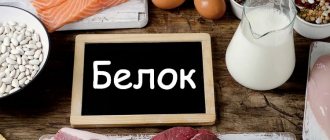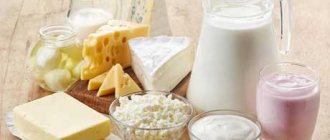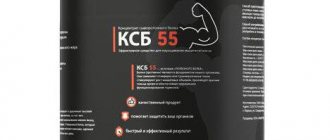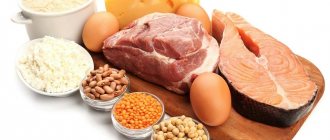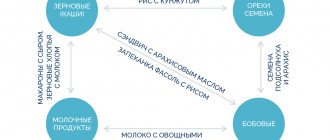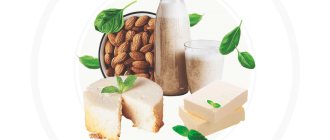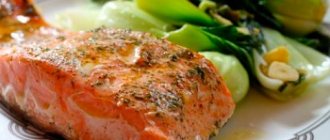Quinoa
Quinoa is an ancient grain that is similar to couscous but has a crunchy texture and a nutty flavor.
Because it does not grow from grasses like other grains and grains, it is technically considered a pseudocereal and is naturally gluten-free ().
A 185-gram serving of cooked quinoa contains approximately 8 grams of protein ().
In addition to being a complete protein, quinoa contains more magnesium, iron, fiber, and zinc than many common grains ().
You can use quinoa instead of rice in most recipes. It can also be simmered in plant-based milk to create a creamy, protein-rich breakfast porridge.
Summary:
Quinoa is a gluten-free grain that contains 8 grams of protein per 185-gram serving. It is also a good source of several minerals, including magnesium, iron and zinc.
Tofu, tempeh and edamame
Tofu, tempeh and edamame are made from soybeans and are excellent plant-based sources of protein ().
Tofu is made from coagulated soy milk that is pressed into white blocks and comes in a variety of textures, including silken, firm and extra firm. Since tofu is quite soft, it tends to take on the flavors of the foods it is cooked with.
An 85-gram serving of tofu contains approximately 8 grams of protein. It also contains 15% of the recommended daily intake (RDI) for calcium, as well as lower amounts of potassium and iron ().
Tempeh is much chewier and nuttier than tofu, and is made from fermented soybeans that are often combined with other seeds and grains to form a dense, hard cake.
Meanwhile, edamame are whole, unripe soybeans that are green in color and have a slightly sweet, herbal flavor. They are usually steamed or boiled and can be served as a snack. In addition, they can be added to salads, soups or cereals.
An 85-gram serving of tempeh contains 11 grams of protein. This serving is also a good source of fiber and iron, and contains potassium and calcium ().
85 grams of edamame contain 8 grams of protein along with good amounts of fiber, calcium, iron and vitamin C ().
Summary:
Tofu, tempeh and edamame are made from whole soybeans and are excellent sources of complete protein. An 85-gram serving of edamame or tofu contains 8 grams of protein, while one serving of tempeh contains 11 grams.
Sports diet for a vegetarian[edit | edit code]
Raw food/veganism. What does science say? Mortality, cancer, intelligence, bones, vitamins. Author: Boris Tsatsouline
As plant-based diets grow in popularity among athletes, the risk of using poorly designed plans and subsequent deficiencies in important nutrients also increases. Energy imbalance not only reduces the body's metabolic rate, but also negatively affects hormonal levels, bone health and the absorption of protein, calcium, vitamin B12, iron and zinc from meals. Inadequate absorption of these nutrients will have a negative effect on the athlete's health and athletic performance. On the other hand, an athlete can reap many benefits from a properly balanced vegetarian diet, both in terms of overall health and athletic performance. Following the following system of principles and recommendations will allow you to lead a healthy vegetarian lifestyle.
- Achieve a healthy energy balance by consuming enough calories to meet your body's needs during training and competition preparation. The average athlete requires approximately 32 to 60 calories per kilogram of body weight to meet the high demands of athletics; a vegetarian athlete may need 10% more. To meet the body's needs in such conditions, it is recommended that a vegetarian athlete eat 6 or more medium meals or small snacks per day containing energy-dense foods such as nuts, avocados, dried fruits and dairy products.
- Monitor your hormonal levels. Contrary to the existing point of view, the absence of certain hormones, especially menstrual irregularities in female athletes, does not mean that the training process is proceeding correctly. For male athletes, low testosterone levels can pose a problem for bone density and athletic performance.
- Listen to your body. If you feel tired, your workouts are sluggish and not intense, and you are constantly sick, then your hormones may not be entirely in order. Try reducing your training weights or eating more energy-dense foods during the day and then see if your hormonal system returns to normal.
- Use plenty of high protein foods in your diet. The average athlete requires approximately 1-1.6g of protein per 1 kg of his body weight in order for his tissues to quickly and efficiently recover after physical activity. Due to the poor digestibility of protein obtained from products of plant origin, vegetarian athletes are recommended to consume it 10% above the specified norm.
- Don't skimp on bone-healthy nutrients. Vegetarians should consume 3-4 servings of dairy products to meet their daily calcium needs (eg, 1 cup cream, soy milk, almond milk, 170g Greek yogurt, half cup (113g) low-fat cottage cheese).
- Pump the iron. The recommended daily iron intake can be obtained from half a cup of firm tofu (approximately 113g) and the same amount of lentils. Iron obtained from plant sources is better absorbed when combined with vitamin C.
- Increase your vitamin B12 intake. While supplemental vitamin B12 may not increase oxygen saturation in the blood, B12 is essential for maximum energy and normal nervous system function. Products that can achieve this goal include: fortified soy milk, meat analogues, and breakfast cereals.
- More zinc! Vegetarian athletes are encouraged to consume lentils, legumes, whole grains, nuts and soy products to meet their zinc needs.
Amaranth
Amaranth is another pseudocereal that is a complete source of protein ().
Once considered a staple food in the Incan, Mayan and Aztec cultures, it has become a popular gluten-free grain.
Amaranth is a versatile grain that can be boiled for a side dish or porridge, or popped like popcorn into granola or salads. Like quinoa, it has a subtle nutty flavor and is crunchy even when cooked.
When ground into flour, amaranth can also be used in gluten-free baking.
250 grams of cooked amaranth contains approximately 9 grams of protein. It is also an excellent source of manganese, magnesium, phosphorus and iron ().
In fact, 250 grams of cooked amaranth contains more than 100% of the RDA for manganese, an essential mineral that is important for brain health (,).
Summary:
Amaranth is a gluten-free pseudocereal. It contains 9 grams of protein per 250-gram serving (cooked). It also contains more than 100% of the RDI for manganese.
Dried apricots – 5.2 g
For those who suffer from anemia, it is an excellent source of not only protein, but also iron along with vitamin C, which helps it be better absorbed. True, there is one drawback: all dried fruits contain more than 100% of the daily sugar requirement - that’s 50-60 g per 100 g of product. In addition, due to the smaller volume and weight of dried apricots, we usually eat many times more than fresh apricots. Therefore, turn on self-control when you decide to have an extra snack.
Buckwheat
Although buckwheat doesn't have as much protein as quinoa or amaranth, it is another pseudocereal that contains all the essential amino acids ().
Buckwheat is often used to make porridge, but you can also make baked goods using buckwheat flour. In Japanese cuisine, buckwheat is most often consumed in the form of noodles called soba.
A 170-gram serving of cooked buckwheat contains approximately 6 grams of protein ().
This pseudocereal is also a good source of many important minerals, including phosphorus, manganese, copper, magnesium and iron ().
Summary:
Buckwheat is another gluten-free grain that is a source of complete protein. A 170-gram serving of boiled buckwheat contains 6 grams of protein.
Ezekiel Bread
Ezekiel bread is made from sprouted whole grains and legumes, including barley, soybeans, wheat, lentils, millet and spelt.
Two slices (70 grams) of bread contain 8 grams of protein ().
Unlike most breads, the combination of whole grains and legumes in Ezekiel bread provides the body with all nine essential amino acids ().
Additionally, research shows that sprouting grains and legumes increases their amino acid content, especially the amino acid lysine (,).
For an extra boost of protein, use Ezekiel bread to make a vegan tempeh sandwich instead of bacon, or toast the bread and top it with peanut butter and chia seeds.
Summary:
Ezekiel bread is made from sprouted whole grains and legumes and contains all nine essential amino acids. Just two slices (70 grams) contain 8 grams of protein.
Vegetable protein: product list
Where can vegans get protein? Let's look at foods that contain the most vegetable protein. This protein serves as a good alternative to animal protein, so it is often used by vegans to maintain normal life functions. Let's look at where vegans get their protein. Vegans can get plant protein by including the following foods in their diet:
- Broccoli. It is distinguished by a high content of vitamins A, B, C, E, K. It also contains fiber, iodine, phosphorus and a number of other elements. This vegetable is considered healthy, but it contains zotrogen, which interferes with the absorption of iodine. Iodine is necessary for the thyroid gland to function properly. If you can't give up broccoli, steam this vegetable. During steam treatment, zotrogen will lose its properties, while the remaining plant components will be absorbed normally.
- Brussels sprouts have the same nutritional profile as broccoli. But it also needs steam treatment. In addition, Brussels sprouts interfere with the absorption of iron, which vegans and vegetarians lack. Therefore, be careful when consuming this product.
- “Ezekiel” bread is a mixture of grains and legumes, so it contains almost all groups of vitamins, fiber, phosphorus, iron, potassium, manganese, selenium and much more. It is a rich source of vegetable protein. One slice of this bread contains 4 grams. That is, it is enough to eat a few slices to fill the daily requirement and provide your body with useful minerals and amino acids.
- Lentils are rich in microelements. It would seem that this is one of the best breakfasts for vegans and vegetarians. However, the low content of amino acids in the product slows down metabolism, and therefore the absorption of nutrients.
- Coconuts and bananas. These products, rich in vitamins and microelements, also contain proteins of plant origin, and their price is quite affordable.
This list of products includes affordable and fairly budget-friendly products for those who decide to give up meat and fish and focus on getting the protein found in vegetables and fruits. By the way, greens and plants are also a very rich source of protein.
Spirulina
Spirulina is a type of blue-green algae that is a popular supplement among vegetarians and vegans ().
Although spirulina can be purchased in tablet form, its powdered form can easily be added to smoothies, granola bars, soups and salads to improve their nutritional value.
Just 1 tablespoon (7 grams) of dried spirulina contains 4 grams of protein ().
In addition to being a source of complete protein, spirulina is rich in antioxidants and is a good source of several B vitamins, copper and iron ().
Summary:
Spirulina, a blue-green algae supplement, is a source of complete protein. One tablespoon (7 grams) contains 4 grams of protein, as well as good amounts of B vitamins, copper and iron.
Hemp seeds
Coming from the hemp plant Cannabis sativa, hemp seeds are the same species as marijuana but contain only trace amounts of tetrahydrocannabinol (THC), the psychoactive chemical in marijuana ().
As a result, hemp seeds are unlikely to contain enough THC to produce a high feeling or any of the other psychoactive effects associated with marijuana ().
However, there is concern that hemp seeds may be contaminated with THC from other parts of the plant during harvest or storage. Therefore, it is important to buy seeds from trusted brands that test for THC ().
The edible white parts inside hemp seeds are incredibly nutritious.
In addition to being a source of complete protein, hemp seed hearts are especially rich in the essential fatty acids linoleic acid (omega-6) and alpha-linolenic acid (omega-3) ().
Three tablespoons (30 grams) of raw, coated hemp seeds boast an impressive 10 grams of protein and 15% of the RDA for iron. They are also a good source of phosphorus, potassium, magnesium and zinc ().
Hemp seed cores have a mild, nutty flavor and can be added to yogurt, salad or smoothies, or included in homemade granola and energy bars.
Summary:
Hemp seeds are incredibly nutritious and are often sold hulled. In addition to containing a whopping 10 grams of protein per 30 grams (3 tablespoons), they are a good source of essential fatty acids, iron, potassium, and several other essential minerals.
Beans – 21.1 g
If you no longer enjoy the latest issue of Marathon Man magazine, this does not mean that we write bad articles. Perhaps you just don't eat enough beans. It would seem, what does beans have to do with it? In addition to the fact that it contains a sky-high amount of isoleucine, an amino acid responsible for the structure of muscle tissue, it contains folic acid. And its deficiency is traditionally associated with depression and bad mood. Perhaps 1 serving (80-100 g) of beans 2-3 times a week will not only support the body’s energy level, but will also prevent you from becoming depressed.
Chia seeds
Chia seeds are tiny, round seeds that are often black or white.
They are unique in that they can absorb liquid and form gel-like substances. As a result, they can be used to make pectin-free puddings and jams. They are also widely used as an egg substitute in vegan baking.
However, chia seeds can also be used raw as an ingredient in oatmeal or salads, or added to baked goods or smoothies.
Two tablespoons (30 grams) of chia seeds contain 4 grams of protein. They are also a good source of omega-3s, iron, calcium, magnesium and selenium (,).
Summary:
Chia seeds are tiny, round seeds that contain all nine essential amino acids. Two tablespoons (30 grams) contain 4 grams of protein, as well as good amounts of omega-3 fatty acids and several important minerals.
Nutritional yeast
Nutritional yeast is a deactivated strain of Saccharomyces cerevisiae specially grown for use as a food product.
Commercially, nutritional yeast is sold as a yellow powder or flake and has a characteristic umami flavor that can be used to add a cheesy flavor to vegan dishes such as popcorn, pasta, or mashed potatoes.
A 15-gram serving of nutritional yeast contains 8 grams of protein ().
When fortified, nutritional yeast can also be an excellent source of zinc, magnesium, copper, manganese and all B vitamins, including B12 ().
Summary:
Nutritional yeast is a deactivated strain of yeast that imparts a cheesy, umami flavor to vegetarian dishes. Just 15 grams contain 8 grams of protein.
What can vegetarians do?
Vegan protein without GMO
Vegan protein is a special protein that has a light taste and excellent solubility. It has a unique composition that is suitable for vegetarians and those with allergies to milk protein.
Plant-based protein powders can be a great post-workout supplement for quick recovery. They easily cover the need for protein; at the same time, they can be consumed not only on their own - in the form of drinks - but also added to some vegan dishes. However, make sure that your protein powder comes from a non-GMO food source. Such powders are preferable because the raw materials for them undergo more gentle processing and do not contain chemicals of questionable usefulness, including monosodium glutamate, and you can even find “organic” ones.
Powders based on whey protein are undesirable because... this ingredient can promote inflammatory processes, increase allergies, irritate digestion - but, fortunately, this is not the only possible option.
Soy protein isolate (soy protein) is also not our priority, although it is a vegan option: soy isolate is a highly processed soy product that can cause an allergic reaction in some. It is better to include more natural soy products in your diet, such as tofu, tempeh, and edamame. An ideal example is hemp protein, which is simple, derived from a single source - hemp seeds - and 100% vegan. It contains all the necessary amino acids and many useful substances (and hemp seeds do not contain narcotic substances, they are safe - Vegetarian). You just need to choose a non-GMO product and, better yet, a raw food product - you can always find those.
L-Glutamine (Easily Digestible Glutamine)
Glutamine is one of the most important amino acids, it helps build muscle and recover, and also has anti-inflammatory properties.
This supplement is now very popular among athletes because... Glutamine is one of the most important amino acids, it helps build muscle and recover, and also has anti-inflammatory properties. Use it before and after workouts. The best L-glutamine supplements are vegan, raw food, and minimally processed options. These supplements can be mixed into your workout drink, drunk as part of a smoothie, added to raw oatmeal (soaked overnight), or even cold drinks. El-glutamine cannot be heated - it loses its beneficial qualities.
BCAAs
"Amino acids with branched side chains" - English. Branched-chain amino acids, or “BCAA” for short, are a very useful dietary supplement for athletes. It allows you to gain muscle mass or maintain it, preventing muscle loss due to lack of protein. The BCAA supplement contains L-leucine, L-isoleucine and L-valine. “L” means an option that is easier to digest: the supplement does not require digestion in the stomach, the nutrients immediately enter the bloodstream. BCAAs are especially useful if you cannot eat high-calorie foods before exercise (after all, eating high-calorie foods is a sure way to get a “stone in the stomach” during training). It is easy to find a vegan version of this supplement, as well as BCAAs as part of another sports supplement (it turns out to be “2 in 1”).
poppy
Peruvian maca powder is a more natural alternative to other nutritional supplements for athletes.
Maca is a wonderful energy food that supplies your body with beneficial amino acids that promote post-workout recovery.
This wonderful energy product supplies your body with beneficial amino acids that promote post-workout recovery. Maca optimizes hormonal levels, helps muscle growth, speeds up metabolism, is good for the brain, prevents muscle spasms and inflammation in the muscles. This powder from Peru is truly a godsend and can be used to make many delicious vegan dishes. In addition to the above, vegan athletes should include the best multivitamin you can find and vitamin B12 in their diet. It's worth repeating: all of these supplements make sense only "in the background", on the reliable basis of your complete, healthy and light diet. These supplements are not the only ones possible; different athletes may have their own secrets and best practices. However, the listed substances are useful in that they allow you to avoid the negative, “dark” side of sports nutrition - they do not cause inflammatory processes, because are not made up of crazy “chemistry”.
Rice and beans
Rice and beans are a classic combination that provides complete protein.
Brown and white rice are low in lysine but high in methionine. In contrast, beans are high in lysine but low in methionine. Thus, combining them allows you to get enough of each of these amino acids, as well as the remaining seven essential amino acids, making them a source of complete protein.
A 240-gram serving of rice and beans contains 12 grams of protein and 10 grams of fiber ().
While you can enjoy the mixture as is, the rice and beans can be dressed with guacamole, salsa and roasted vegetables for a simple, satisfying meal.
Summary:
Together, rice and beans contain all nine essential amino acids, making the combination a complete source of protein. A 240-gram serving contains 12 grams of this nutrient.
Is it possible to gain muscle mass without meat?
Both vegetarians and vegans do not eat meat at all. As you know, the basis of a bodybuilder’s diet is protein. In the case of vegetarianism, the consumption of dairy products is allowed. In this case, this nutrient can be obtained from milk, cottage cheese and other similar foods. Vegans do not consume meat or dairy products. It’s more complicated here: they are trying to compensate for the protein deficiency with plant foods. In this case, you need to lean on soy, legumes, nuts, and lentils.
Naturally, plant protein is by no means a complete replacement for animal protein. The biological activity of the former is almost half that of the second category. In addition, animal protein is much richer in amino acids, which are necessary for muscle building. And, of course, eating legumes in large quantities can lead to unpleasant consequences regarding the gastrointestinal tract.
The high amount of fiber that vegans and vegetarians eat benefits the gut, but can also absorb important amino acids. It turns out that such an athlete needs to try to stuff himself with even more protein.
And finally, the last (although there are most likely more) disadvantage of this lifestyle is the lack of creatine. This component is necessary for both muscle growth and strength. An ordinary person gets it from meat, while vegans and vegetarians do not have this opportunity.
Thus, gaining muscle mass without meat products is very, very difficult. You will have to work very hard and strain your brains to build a diet in such a way that your calorie intake is higher than your calorie expenditure. The nutrients that meat is so rich in will have to be replenished from other sources, but subject to the characteristics of the body.
Pita and hummus
Pita and hummus is another combination that contains all nine essential amino acids.
Like rice, the wheat used to make pita bread contains too little lysine to be considered a complete source of protein. However, chickpeas, the main ingredient in hummus, are rich in lysine (,).
One medium whole wheat pita (60 grams) with 2 tablespoons (30 grams) of hummus contains approximately 7 grams of protein (,).
In addition to serving as a snack, adding fried or baked chickpea balls known as falafel will further boost the protein content of pita and hummus.
Summary:
The combination of pita bread and hummus is another classic combination that provides a complete source of protein. One medium pita (60 grams) with 2 tablespoons (30 grams) of hummus provides 7 grams of protein.
Contraindications and possible harm
It is important to note that not everyone will be able to abstain from eating meat, fish and dairy products. The Dukan protein diet for vegetarians with the partial exclusion of fats and carbohydrates can lead to:
- kidney problems due to increased stress on them;
- leaching of calcium from the body, which can cause problems with the skeletal system;
- risk of blood clots due to increased blood clotting;
- unhealthy decrease in blood cholesterol levels.
A vegetarian diet for weight loss has a number of contraindications:
- diabetes;
- pregnancy and lactation;
- pathologies of the gastrointestinal tract;
- problems in kidney function;
- cardiovascular diseases;
- postoperative period;
- age less than 18 years;
- malignant neoplasms;
- chronic diseases.
Peanut butter sandwich
Natural peanut butter spread on whole grain bread is another common combination that is considered a source of complete protein.
As mentioned earlier, wheat is low in lysine, while legumes like peanuts make up for it with high lysine content.
Two slices (60 grams) of whole grain bread with 2 tablespoons (30 grams) of peanut butter provide approximately 14 grams of protein (,).
However, the exact amount of protein may vary depending on the bread you buy.
When choosing peanut butter, aim for one with as few ingredients as possible, ideally just peanuts and maybe a little salt.
Summary:
Wheat bread contains little lysine, but when combined with lysine-rich peanut butter, it becomes a complete source of protein. One peanut butter sandwich contains about 14 grams of protein.
Plant protein in a vegan diet: where to get it and what to replace it with
Protein in a vegan diet
Not only those interested in the topic of ethical nutrition, but also people with other views on human nature are often interested in the question of where vegans get their protein.
This is precisely the question that is one of the arguments of opponents of eating without animal products, when they assume that it is impossible to obtain a sufficient dosage of protein in a daily diet on veganism. The inevitable deficiency of protein in a vegan diet, as well as its importance in human nutrition in general, is a big misconception. For those who are interested in what vegans replace protein with, they do not replace it, but get it fully in their daily diet, since plant foods are a good source of protein. Taking into account the recommended daily protein intake by the World Health Organization, a person needs to receive 0.8 g of protein per kilogram of weight every day. Given the difference between plant and animal protein—certain types of plant protein are processed in the gastrointestinal tract somewhat differently than animal protein—for people following a plant-based diet, it is advisable to increase the daily dose of protein to 1g per kilogram of weight.
An important factor in the correct calculation of the dosage of microelements is the percentage of protein and the total number of calories consumed by a person. A significantly lower level of calorie intake for a plant-based dieter is common in the absence of control over calorie intake to a certain standard. A sixty-kilogram vegan will consume 60 grams of plant protein per day, which is a larger percentage of his caloric intake than a meat eater who will consume the same amount of protein. Average statistical estimates suggest that the level of protein consumed by a meat eater is 10-13% of the total daily calorie intake, while vegetarians and vegans most often consume 14-18% protein. This means that the ratio of CBJU, which is one of the most important factors in balanced and proper nutrition, is normal among those who adhere to abstaining from animal products (ASF).
Most often, in the absence of strict control of BPJU, a meat-eating person tends to go over the recommended daily protein intake, especially if he is fond of visiting fast food restaurants and ready-made foods. The danger of too much protein should not be underestimated: it fuels the development of many diseases. Animal protein, not to mention too much of it, tends to provoke the development of cancer cells, obesity, problems with the cardiovascular system and other serious abnormalities.
Therefore, obtaining vegan protein is not at all difficult. For greater specificity, we will combine sources containing essential amino acids and proteins of plant origin into the list of products. So where is the most plant-based protein?
Seitan
Seitan is one of the most common protein sources for vegans.
The product is made from gluten, the main type of protein in wheat. Many note its similarity to meat in appearance and consistency of the product. 100g of pure seitan without additives contains 25g of protein, making it one of the richest sources of protein.
Seitan is not very easy to find on Russian store shelves, but it is very common abroad. You can only buy it in specialized plant food stores. But seitan is quite easy to prepare at home, because there are many different variations of its preparation online. Seitan is consumed fried in a pan or grilled, as well as boiled, so it can be used in countless dishes. Contraindicated for people with celiac disease.
Tofu, tempe and edamame
These products are soy derivatives. Soybeans are a complete source of protein that saturates the body with the amino acids it needs.
Edamame is an unripe soybean with a sweet and slightly grassy flavor. They can be cooked in a double boiler or boiled to serve as an independent side dish or added to hot and main courses.
Tofu, or “vegan cheese” as it is often called, is made from pressed minced beans using a technology similar to making cheese. Recently, it can be found not only in specialized stores, but also in almost every hypermarket throughout Russia. It costs no more than cheese, and is served in many variations with different additives, such as herbs, spices or even fruits.
Tempe soy product is made by boiling and pressing ripe soybeans. It has a slightly nutty flavor and contains an impressive amount of probiotics and vitamins.
These soy products contain 10-19 grams of protein, depending on preparation, for every 100 grams of product.
Lentils
All varieties of lentils (red, green, brown) contain 25g of plant-based protein. It is one of the record holders in protein value. Of course, you need to take into account its quantity in dry form.
Chickpeas and most legumes
As a rule, all legumes are famous for their high protein content. For example, popular chickpea beans (most often eaten with minced meat - falafel) contain 19 grams of protein per 100 grams of product.
The beneficial properties of legumes can be listed for a long time: they are valuable sources of long-digesting complex carbohydrates, fiber, iron, folic acid, and a diet whose main product is legumes helps control cholesterol and blood sugar, regulate blood pressure in hypertension and help normalize weight in obesity .
Spirulina
Just two scoops (14g) of nutritious spirulina algae will provide you with 8 grams of pure protein, plus 22% of your daily iron and thiamine needs. Spirulina has a lot of unique medicinal properties.
Spirulina in its various forms can be purchased in specialized stores and some hypermarkets at a price that will seem too low to you compared to the storehouse of useful microelements and properties that you will receive. Most often, spirulina is produced in dried form. You can order it in almost every online health food store.
Amaranth and quinoa
Nutritious cereals, which are completely gluten-free, contain 14 g of protein per hundred grams of product. They are prepared as individual dishes or ground into flour for use in cooking.
Crispbreads and bread products made from sprouted grains
Any bread products made from natural sprouted grains or legumes contain approximately 8 g of protein per serving of product, equal to two slices of regular bread (which has several times less protein).
In addition, sprouted grains and legumes increase their nutritional properties and the number of amino acids, and reduce the amount of anti-nutrients. The amino acid lysine, which opens during germination, helps improve the quality of the resulting protein. And the combination of grains and legumes in the preparation of bread will improve the quality of bread to the limit.
Plant milk
Soy, almond, coconut and other plant milks contain approximately 3-4 grams of protein. Accordingly, drinking an average glass of this milk (250 milliliters) will provide you with approximately 9 grams of protein.
All pasteurized plant milks are pre-fortified with additional calcium and essential vitamin B12.
Nuts and products made from them (peanut butter, peanut butter, etc.)
Nuts and vegan protein-rich products made from them are another great source of protein.
100g of each type of nut contains about 20g of protein. They also contain a treasure trove of fiber, healthy fats and a variety of vitamins.
When purchasing nuts, you should keep in mind that roasting and heat treatment can reduce their nutritional value and the amount of useful substances. To get the most benefit from your nuts, consume them pre-soaked (two to twelve hours, depending on the nut).
When choosing nut butters and pastes, give preference to products that are as simple in composition as possible and do not contain excess oil, sugar and salt. This way the protein and other micronutrients contained in them are absorbed best.
Table of protein content in nuts, dried fruits and seeds
| Dried fruits, nuts, seeds | Name | Proteins per 100 gr. product |
| Dried apricots | 4.8 gr. | |
| Prunes | 2.3 gr. | |
| Dates | 2.5 gr. | |
| Raisin | 1.8 g | |
| Dried figs | 3.1 gr. | |
| Dried apple | 3.2 gr. | |
| Dried apricots | 5.1 gr. | |
| Peanut | 26.3 gr. | |
| Walnut | 16.2 gr. | |
| Pine nut | 11.6 gr. | |
| Cashew | 17.5 gr. | |
| Almond | 21.2 gr. | |
| Pistachios | 20.1 gr. | |
| Hazelnut | 16.1 gr. | |
| Sunflower seeds | 23.1 gr. | |
| Pumpkin seeds | 24.5 gr. | |
| Hemp seeds | 35.3 gr. | |
| Chia seeds | 16.6 gr. | |
| Sesame seeds | 18.4 gr. | |
| Flax seeds | 18.1 g |
Protein-rich fresh vegetables and fruits
Vegetables and fruits, which often make up the majority of the diet of plant-based dieters, are usually underestimated in their benefits. Yes, the amount of protein in vegetables and fruits is usually small, but some of them contain enough.
Where to get protein for vegans: fruit and vegetable products.
Table of protein content in vegetables and mushrooms
| Vegetables, mushrooms | Titles | Proteins in 100 gr. product |
| Potato | 2 gr. | |
| Beet | 2.5 gr. | |
| Cauliflower | 2.5 gr. | |
| Garlic | 6.5 gr. | |
| White cabbage | 1.8 gr. | |
| Eggplant | 1.2 gr. | |
| Zucchini | 1.2 gr. | |
| Carrot | 1.4 gr. | |
| Pepper | 1.3 gr. | |
| Radish | 1.9 g | |
| Asparagus | 2.2 gr. | |
| Artichoke | 1.2 gr. | |
| Corn | 3.3 gr. | |
| Green pea | 5.4 gr. | |
| Chilli | 2 gr. | |
| Pumpkin | 1 gr. | |
| White onion | 1.4 gr. | |
| Broccoli | 2.8 gr. | |
| Tomatoes | 1.1 gr. | |
| cucumbers | 0.8 gr. | |
| Porcini mushrooms | 3.7 gr. | |
| Champignon | 4.3 gr. |
Fresh fruits are somewhat inferior to vegetables in terms of protein amino acid content. Together with the microelements in their composition, they bring undeniable benefits.
Table of protein content in fruits
| Fruits | Name | Proteins in 100 gr. product |
| Apricot | 1.4 gr. | |
| A pineapple | 0.5 gr. | |
| Orange | 0.9 gr. | |
| Watermelon | 0.6 gr. | |
| Banana | 3.9 gr. | |
| Grape | 0.6 gr. | |
| Cherry | 1.1 gr. | |
| Pomegranate | 0.9 gr. | |
| Grapefruit | 0.7 gr. | |
| Pear | 0.5 gr. | |
| Melon | 0.8 gr. | |
| Figs | 0.7 gr. | |
| Kiwi | 0.8 gr. | |
| Coconut | 3.3 gr. | |
| Lemon | 0.9 gr. | |
| Mango | 0.5 gr. | |
| Mandarin | 0.6 gr. | |
| Apple | 0.3 gr. | |
| Pomelo | 0.8 gr. | |
| Papaya | 0.6 gr. | |
| Peach | 0.9 gr. | |
| Plum | 0.7 gr. | |
| Cherries | 1.1 gr. |
Although nuts are one of the leading plant foods in terms of protein content, some plants also contain decent amounts.
Here are 18 healthy leafy greens that contain enough protein.
Table of protein content in greens
| Greenery | Name | Proteins in 100 gr. product |
| Basil | 3.2 gr. | |
| Green onions | 1.1 gr. | |
| Ivan-tea angustifolia | 4.7 gr. | |
| Keil | 4.3 gr. | |
| Cilantro | 2.1 gr. | |
| Watercress | 2.6 gr. | |
| Leaf lettuce | 1.5 gr. | |
| Dandelion leaves | 2.7 gr. | |
| Chard | 1.8 gr. | |
| White pigweed | 4.2 gr. | |
| Mint | 3.7 gr. | |
| Oregano | 9.9 gr. | |
| Parsley | 3.7 gr. | |
| Romano | 1.5 gr. | |
| Arugula | 2.6 gr. | |
| Dill | 2.5 gr. | |
| Spinach | 2.9 gr. | |
| Sorrel | 1.5 gr. |
Contrary to myths, protein deficiency in plant-based diets is not common. One of the main rules for any diet, plant-based or with ALP, is to control the ratio of nutrients to maintain optimal balance.
Tags: plant-based protein nutrition plant protein
Posted by Vegan Ray October 25, 2020
Mycoprotein (quorn)
Mycoprotein is a meat substitute sold under the name Quorn.
Made from a naturally occurring fungus called Fusarium venenatum, it is sometimes mixed with eggs or milk protein before being formed into balls, briquettes or strips. As a result, not all mycoprotein products are vegan ().
Both the Food and Drug Administration (FDA) and the UK Food Standards Agency have determined that mycoprotein is safe enough to be sold to the public ().
However, there is some concern that fungal ingredients may cause dangerous allergic reactions in some people ().
However, because it is a rich source of essential amino acids and is low in sodium, sugar and fat, it is a popular option for those looking for a plant-based alternative to chicken ().
Although the amount of protein varies depending on the product, one 75-gram serving of Quorn can contain 9 grams of protein ().
Summary:
Mycoprotein, a popular meat alternative, is sold under the Quorn brand. While the amount of protein varies depending on the product, Quorn can contain around 9 grams of complete protein.
Protein in the diet of vegetarians and vegans
Vegetarians are people who refuse to eat meat and fish. Vegans are adherents of a stricter diet. They abandoned not only meat and fish, but also dairy products, honey and all animal derivatives. Therefore, they are recommended to eat vegan products as sources of plant protein, as well as take special animal protein substitutes and undergo regular medical examinations.
Proteins perform several functions:
- Construction. Participates in the process of cell regeneration.
- Protective. Helps the immune system produce antibodies.
- Transport. Participates in the transport of nutrients through blood vessels.
- Regulating. Maintains optimal hormonal levels.
- Energy. Maintains physical activity throughout the day.
- Protein is also needed to create DNA and RNA chains.
Vegans and vegetarians following a plant-based diet receive much less protein than the body requires. When you change your diet, health problems do not appear immediately. But later, against the background of a plant-based diet, iron deficiency occurs. The following symptoms indicate this:
- Excessive fatigue. Feeling groggy when waking up.
- Pallor of the skin. First the eyelids turn pale, then the rest of the skin.
- Dyspnea. Occurs due to low levels of hemoglobin in the blood.
- Frequent dizziness and migraines.
- Tachycardia. Due to iron deficiency, the heart begins to work at an accelerated pace in order to better supply the internal organs with the necessary amount of oxygen and nutrients.
- Dry hair and skin. With severe iron deficiency, hair begins to fall out.
- The appearance of ulcers and swelling in the oral cavity. In severe cases, anemia develops.
- Restless legs syndrome. The syndrome is not fully understood. It is characterized by painful sensations and a desire to constantly change the position of the lower extremities. This is especially noticeable at night.
- Brittle nails. The main component of nails is the protein keratin. When it is deficient, nail growth slows down and white spots appear on their surface. Keratin is also involved in skin renewal and hair growth.
- Swelling. As a result of a deficiency of necessary elements, the urinary system slows down its work, retaining fluid in the body and thus provoking the formation of edema of the lower extremities.
- Weight loss. Muscle mass decreases especially sharply.
We have listed the main symptoms indicating that, despite a plant-based diet, the body suffers from iron deficiency.
Attention!
Long-term protein deficiency leads to a malfunction of all body systems. It can cause extreme physical exhaustion when body weight is less than 60% of normal. At the same time, irreversible processes occur in the body. It is possible to develop kwashiorkor, a severe dystrophy due to a lack of protein products in the diet on the background of a plant-based diet. The skin becomes rough, swelling appears throughout the body. Mental disorders, cognitive functions and the development of sociopathy cannot be ruled out.
Thus, to prevent the development of the above health problems, vegans and vegetarians need to eat protein-rich plant foods.
Summarize
- Although there are some concerns about getting enough protein on a vegetarian or vegan diet, there are many plant-based foods that are high in protein.
- In addition, some of these foods even contain all nine essential amino acids and are therefore considered complete proteins.
- To make sure you're meeting your amino acid needs on a vegetarian or vegan diet, try incorporating different combinations of these protein sources into your diet.
Tags: Vegan diet, Vegetarianism
- Related Posts
- Foods that Promote Collagen Production
- Fiber-rich foods: list
- What foods are high in sulfur and how does it affect the human body?
« Previous entry
Other protein sources
There are alternative animal and plant-based protein sources. Plants contain vegan protein, so a vegan diet can be just as balanced. Where to get protein? Vegan protein is found in the following foods:
- Chia seeds or Spanish sage. In Russia, these seeds are not very popular. Chia seeds are a natural antioxidant rich in plant protein. Chia seeds are also a rich source of calcium, fiber and fatty amino acids. When consumed as food, chia seeds contribute to the stable functioning of the body.
- Mushrooms. This is natural “forest meat”. It is a rich source of proteins (up to 35 grams per 100 grams of product). They also contain 18 amino acids, 8 of which are not produced by the body. This is one of the richest vegetable protein foods.
- Seitan. It is a food product made from wheat protein. Due to its high protein content, appearance and texture, seitan is a world-famous plant-based meat substitute.
- Vitamin complexes and biologically active supplements (BAA), which today are presented in a wide range in any pharmacy. Such preparations are designed to cover the daily intake of elements necessary for the body. After the first month of use, as a rule, metabolism and general well-being improve.
- Microalgae. Today there are many dietary supplements based on processed algae. Algae are purified from pathogenic bacteria, but at the same time retain their beneficial properties. Contains proteins of plant origin.
- Microorganisms. Sold by companies that produce dietary supplements. In this case, everyone decides for himself whether they are part of the fauna or whether they can be classified as flora and eaten with a clear conscience.
- Plant-based meat. This is a modern product that is poorly represented on the Russian market, but is popular in the USA and Europe.
- Protein shakes. Provides a person's daily protein requirement. Sold in specialized stores.
So, we have looked at how vegans replace protein.
Today, plant-based nutrition is rapidly gaining popularity. In the 21st century, vegetarian and vegan products can be found as alternatives to animal proteins. The stores offer a sufficient selection of herbal products at affordable prices. If you prepare new dishes every day (even from the same products), then a plant-based diet is unlikely to get boring. Moreover, vegetarianism and veganism will help prevent the development of a number of dangerous diseases, the risk of which increases with age.
